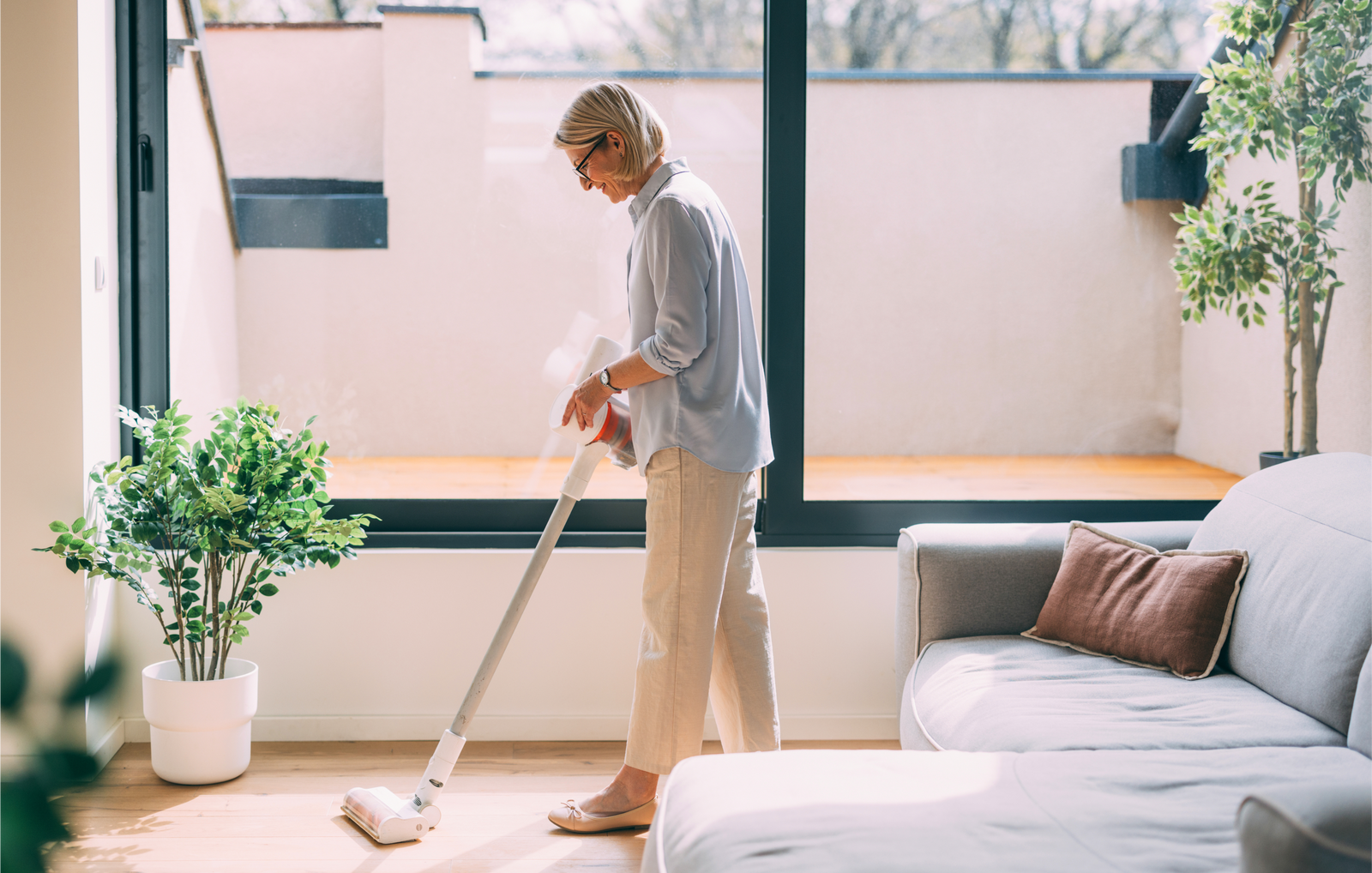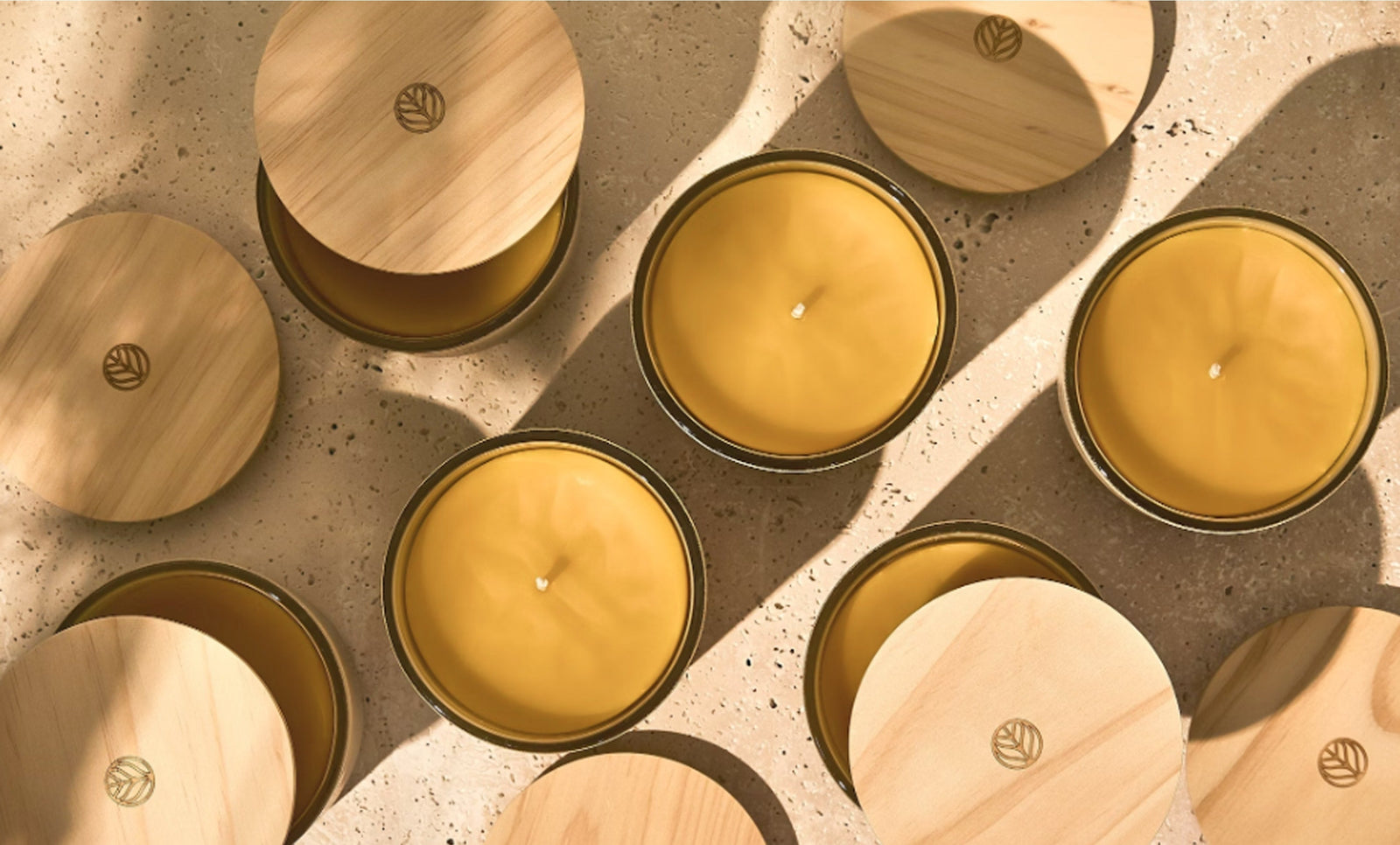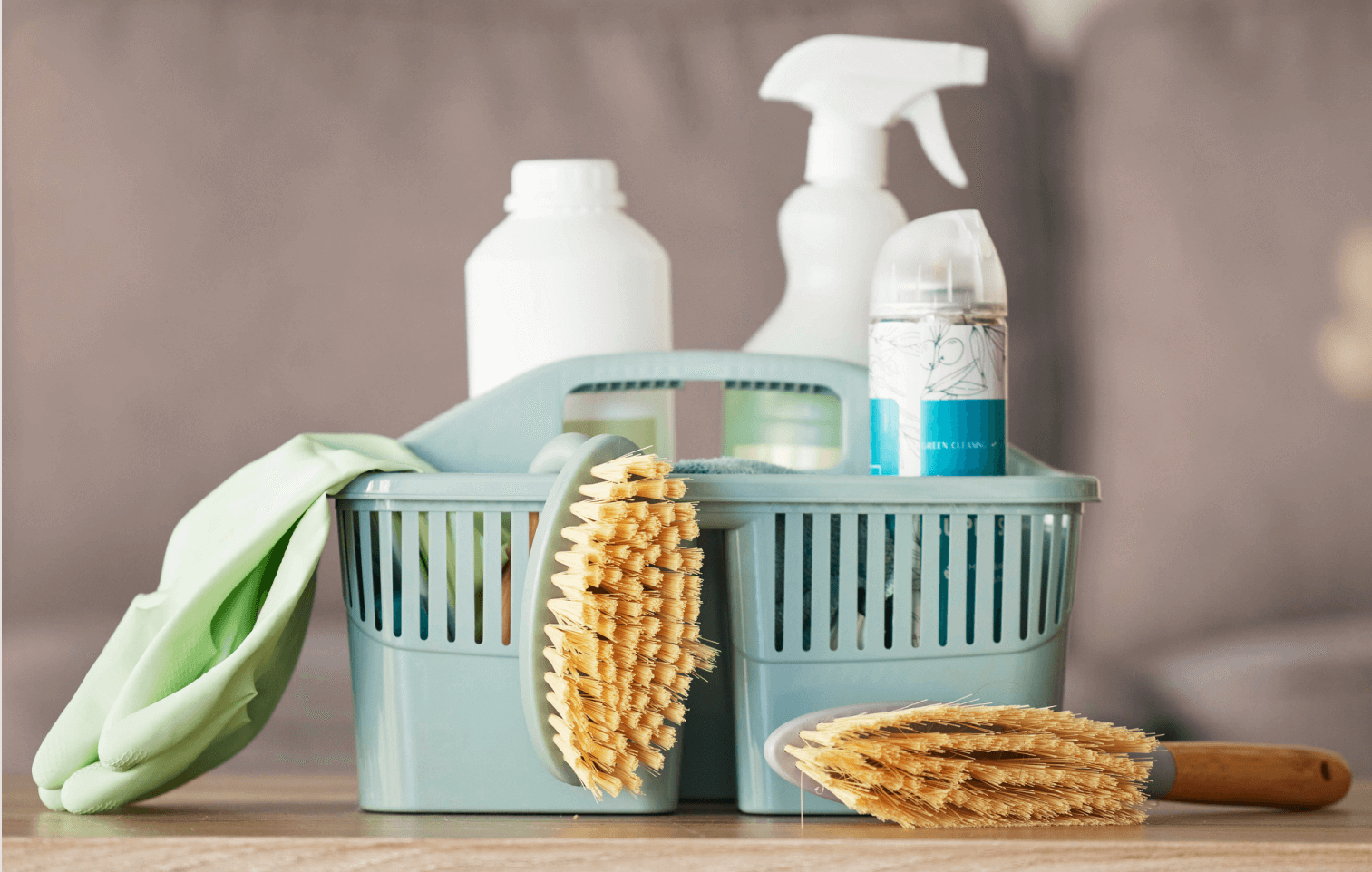How to Make Your Home Asthma-Friendly

If you or someone you love has asthma, you know reducing triggers is essential.
Although we cannot control what happens outside the home, we can create an asthma-friendly oasis at home that benefits the whole family.
Here, you’ll learn how to make your home asthma-friendly by removing common household and environmental triggers.
We’ll also share how to swap products containing asthmagens (asthma triggers) for safer, more natural, and asthma-friendly alternatives.
Your home should be a safe haven for everyone, including asthma sufferers—let’s make that happen right now.
Common Asthma Triggers
Different people have different triggers when it comes to asthma, allergies, and chemical sensitivities.
The following are some common asthma triggers lurking in many homes.[1][2]
- Smoke (cigarette, candles, woodstove, etc.)
-
Fragrances, including synthetic fragrance or perfume, air fresheners, essential oils and “natural fragrance”
- Harmful chemicals in products throughout the home
-
Dust
- Pet dander
- Pollen
- Bugs, mice, and other pests
-
Mold and mildew
-
VOCs and other indoor air pollutants
- Dampness
- Extreme heat or cold
Asthma can also be triggered by things like excess exercise, emotional turmoil or trauma, infections, and certain medications.
The good news is you absolutely can prevent, remove, and reduce these triggers at home without resorting to more asthma-triggering chemicals, like pesticides or harsh cleaners.
The next sections will show you how.
Related Reading: The Home Cleaning Guide For Asthma Sufferers: 16 Tips
How To Reduce Asthma Triggers
You’ve already conquered the first step to reducing asthma triggers: identifying them.
Now that you know what you’re looking for, let’s dive into how to reduce asthma triggers to make your home more asthma-friendly.
Related Reading: 6 Safe And Natural Cleaning Products And Tools For Asthma Sufferers
Keep Your Home Clean With Safe Asthma-Friendly Cleaning Products
Keeping your home as clean as possible will automatically eliminate many asthma triggers, such as dust, pollen, pet dander, and indoor air pollutants.
However, you don’t want to clean your home with products that contain asthmagens!
This may sound obvious, but very few people realize how triggering common and wholesome-appearing cleaning products can be for asthma.
Some of the worst asthmagens in common cleaning products include:
- Ammonia
- Bleach
- Essential Oils
- Ethanolamine surfactants
- Formaldehyde-releasing preservatives
- Fragrance
- Phthalates (found in fragrances and plastics)
- Quats
- VOCs
Get the details on these ingredients in: Best Cleaning Products For Asthma Sufferers.
We’ll share more details on how to clean without asthma-triggering cleaning chemicals in subsequent sections.
Keep Your Home Dry
Humidity and moisture breed mold and mildew, which are very common asthma triggers.
Your best defense is to keep your home dry by increasing circulation, using your HVAC during hot, humid days, and controlling humidity with a dehumidifier.
When bathing, be sure to to use the exhaust fan and/or open windows to suck out humidity.
It is also recommended you hang towels to dry quickly after bathing, or run them through the dryer.
Eliminate Air Pollutants
Indoor air pollutants are sneaky because we can’t see them, and in many cases, we can’t smell them either.
VOCs are one of the most common indoor air pollutants emitted from anything that smells, including new furniture, fragrances, cleaning products, particle board, new flooring, vinyl shower curtains, pesticides, bleach, ammonia, electronic, kitty litter, laundry products, paint, crafting supplies, etc.
The best way to reduce VOCs is to Toss the Toxins, go fragrance-free (more on this to come) and outgas or offgas any new items before bringing them into the home, and do your best to avoid products high in VOCs like paint, plastics, vinyl, fragranced products, and others.
Get more tips in: What Are VOCs? The Dangers + What You Need to Know
SVOCs are trickier because they do not emit a smell and are slowly released from products like insulation, furniture, cookware, and pesticides.
Your best defense against SVOCs, which ride on dust, is to HEPA vacuum and dust regularly, increase ventilation, offgas new products, and avoid plastics, vinyl, synthetic clothing, conventional cleaning products, pesticides, and fragrance as much as possible.
Improve Ventilation
We’ve mentioned the importance of improving ventilation a couple of times already, so here’s what that looks like.
- If it’s a low-pollen count day, throw open your windows for at least 10-20 minutes morning and evening. This naturally blows out old stale air and indoor air pollutants, and brings in cleaner, fresher air.
- Run the exhaust fan in your bathroom, especially after bathing.
- Run ceiling fans (but make sure they’re free from dust).
- Run your HVAC system, and change air filters once a month.
- We like Filtrete air filters, which are free from chemical treatments and trap the maximum amount of dust and particulate.
- We like Filtrete air filters, which are free from chemical treatments and trap the maximum amount of dust and particulate.
- Run your vent hood when cooking, and make sure it’s properly vented outdoors (many aren’t, even on gas stoves).
Finally, be sure to increase ventilation any time you clean or vacuum using a non-HEPA vacuum, which releases dust and particulates into the air.
Break Up With Fragrance
We’ve mentioned this several times, but it is so overlooked that it bears repeating.
Fragrance chemicals found in proprietary fragrance recipes are considered asthmagens. They are so bad for the lungs, so full of harmful chemicals, and so allergenic that fragrance has been called the new secondhand smoke.
If you wouldn’t smoke around someone with asthma, do not use fragrance around them. It’s that important!
The single word "fragrance" on an ingredient list refers to a fragrance recipe that can contain dozens to hundreds of undisclosed chemicals, many of them proven asthmagens, obesogens, endocrine disruptors, allergens, and carcinogens.[3]
What’s worse, many of these signature scents are designed to permeate fabrics, walls, carpets, etc., creating a low-grade toxic soup.
- The first step is to remove all fragrance-containing products from the home (pesticides, cleaning products, laundry products, personal care products, hair care products, plug-ins, air fresheners, trash bags, candles, etc.).
- If you’re ready, dispose of them safely per this guide.
- If you’re not ready to let go, put them in a sealed bin and store them outside the home, such as in a garage or shed.
- Next, replace them with fragrance-free, asthma-safe alternatives, like Branch Basics for cleaning and laundry, and fragrance-free personal care products.
- The last step is to take steps to remove that stuck-on fragrance from your clothes, bedding, walls, carpets, etc.
We outline how to do this step-by-step in our Toss The Toxins Online Course.
You’ll also find helpful tips in:
-
How To Remove Synthetic Fragrance From Your Home
-
Our Favorite Fragrance-Free Personal Care Products
-
The Best Fragrance-Free Cleaning Products & Alternatives
Rethink Your Laundry Routine
Laundry poses several challenges for asthma sufferers, including:
- Laundry detergents, stain removers, fabric softeners, and dryer sheets contain various asthmagens.
- Washers can be sources of mold and mildew, especially front-loaders.
- Wet or damp laundry (think your teenager’s gym clothes or damp towels) can harbor mold.
- Bedding can be a hot-bed for dust.
- Fragrances tend to permeate clothing, making them hard to remove.
- So, the first step is to swap convenional laundry products for asthma-safe versions, like Branch Basics Laundry dilution or Laundry Detergent.
- You can also use Branch Basics All-Purpose to remove just about any stain, and wool dryer balls take care of fabric softening, static, and reducing drying time.
- The second step is to detoxify your washer and dryer and clean out any mold. Click the links to learn how.
- The third step is to start removing permeated fragrance from clothing, towels, and sheets and remove mold or musty smells from clothing or towels without bleach. Click the links for instructions.
- Finally, be sure to wash your bedding weekly in hot water with asthma-safe laundry soap to remove dust and dust mite debris.
We’ll share more about bedding tips for asthma sufferers in subsequent sections.
Ways to Improve Air Quality & Make Your Home Asthma-Friendly
We touched on how to improve air quality using ventilation and removing asthma triggers above.
In this section, we’ll share more tips and essential tools for improving air quality and making your home more asthma-friendly.
Vacuum With A Sealed HEPA Vacuum
We’ve said it before, and we’ll say it again: a HEPA vacuum is indoor air pollution’s worst enemy (and well worth the investment).
The reason is, unlike other vacuums, a true HEPA vacuum is completely sealed and therefore does not re-distribute dust and particles while you clean.
You can actually smell the difference when you vacuum, as a sealed HEPA vacuum has no dusty smell.
This is an absolute must for people with asthma, and we recommend it across the board for creating a healthy home.
We also recommend either using a vacuum bag or emptying the canister outdoors to avoid releasing dust into the air.
HEPA vacuums come in various models, and there is one for nearly every budget.
Learn more in: HEPA vacuum: Indoor Air Pollution's Worst Enemy
Dust Frequently
Indoor dust is a top asthma trigger, but dust is more than meets the eye.
Besides being unsightly, studies have shown various pollutants, chemicals, and contaminants ride on dust including:[4][5]
-
VOCs
-
SVOCs
- Heavy metals
- Bacteria
- Pathogens
-
Phthalates
-
PFASs (aka: forever chemicals)
-
Pesticides
- Biocides
- Pollens
- Dander
- Dust mite excretions
- And more
The best ways to remove dust (vs moving it around) are:
- HEPA vacuum
- A damp microfiber cloth
- A Swiffer or microfiber duster
All these methods pick up and remove dust effectively without redistributing it.
If someone in the home has asthma, we recommend dusting at least two to three times a week. Also, remember ceiling fans, vents, the tops of cupboards and appliances, blinds, curtains, and HVAC returns.
Maintain Your HVAC System
An HVAC system can be a huge blessing for controlling humidity and avoiding extreme fluctuations in temperature, which can trigger asthma.
However, a poorly maintained HVAC system can also trigger asthma.
To avoid this, be sure to have your ducts cleaned at least once or twice a year and have your unit inspected for mold and mildew.
Clean Your Walls And Ceilings
When’s the last time you cleaned your walls and ceilings?
If your answer was “never”, you’re not alone.
However, this simple cleaning practice is one of the most powerful ways to reduce indoor air pollutants, like VOCs and SVOCs, which can trigger asthma.
We recommend it once or twice a year for people without asthma, and seasonally for those with asthma.
Learn how in:
- How To Clean Walls And Ceilings Using Branch Basics
-
How To Clean Textured Walls | The Safe Way To Clean
Maintain Dust-Free/Low-Dust Bedding
Dust loves to settle on surfaces, including bedding (comforters, blankets, etc.), pillows, and plush toys.
The best way to control this is to dust regularly, improve ventilation, and wash all your bedding in hot water at least once a week with asthma-safe laundry detergent.
Additional tips for controlling dust on bedding include:
- Use an allergen cover on your mattress.
- Avoid down pillows and comforters (down is a hotbed for dust mites).
- HEPA vacuum your mattress at least once a month.
- Use a Ladybug dry steam cleaner to sanitize the mattress, kill dust mites, and bed bugs. Advap gives Branch Basics customers a discount with the code: BRANCHBASICS!
Get more tips for a healthier, asthma-safe night’s rest in:
Use An Air Purifier
This tip isn’t original, but it is one of the best ways to improve indoor air quality, with one caveat: be sure to choose a low-tox air purifier.
Yes! Not all air purifiers are created equal in terms of how many asthmagens they remove, what they’re made of, and what types of pollutants they may emit.
Two of our favorites are Austin Air and Aireox Model 45B.
Learn what to look for in: How To Choose An Air Purifier For Your Home.
Create A No-Shoes Indoor Policy
Studies have shown shoes track in an unimaginable amount of pollutants, germs, and asthmagens, including:[6][7][8][9]
- E. Coli
- Klebsiella pneumonia
- Pesticides
- Herbicides
- Fungicides
- Heavy metals
- Fecal matter
- Pollen
- Dust
- Clostridium difficile bacteria
- And other pollutants
The simple solution is to create a no-shoes-indoors policy. This will not only reduce asthma triggers but also make your home cleaner and healthier overall.
Learn how in: Why We Keep A “No Shoes Indoors” Policy
Manage Pet Allergens/Triggers Naturally
If you have asthma and are able to keep a pet, you’ll want to keep their allergen load low for your sake.
The best ways to do this are:
- Don’t allow them to sleep in the bedrooms or on the beds.
- Wash their pet beds regularly.
- Do any brushing or grooming outdoors.
- Make sure groomers use asthma-safe products that are fragrance-free.
- Consider non-toxic flea and tick treatments.
- Have them live or spend time outside as much as possible (within reason and circumstances permitting, of course).
- Wash them regularly using Branch Basics Foaming Wash or another human-safe, fragrance-free, asthma-safe pet shampoo.
- Wipe their paws when they come indoors.
All this will create a healthier environment for you and help improve quality of life for your pet.
Related reading: How To Wash Your Pet With Branch Basics (The Natural Way!)
Ditch Pesticides For Good
Pesticides are no good for asthma, or anyone else, for that matter.
If you have your house treated for bugs or other pests, use pesticides in the garden, or have your lawn treated, we highly recommend seeking alternatives.
Fortunately, we’ve covered this in detail in:
-
How to Remove Pesticides from Your Home in 8 Simple Steps
-
The Ultimate Guide To Natural Pesticides And Safer Alternatives
Toss The Toxins With Branch Basics For An Asthma-Friendly Home
There you have it!
You’re now empowered with everything you need to know to make your home asthma-friendly.
For asthma-safe, pet-safe, MADE Safe, cruelty-free, and biodegradable cleaning and laundry, you must check out Branch Basics.
Check out Branch Basics Starter Kits to learn more about how our signature asthma-friendly Concentrate, plus water, can replace every single cleaner and laundry product in your home.
Consider our Toss the Toxins course, which shows you exactly how to remove all food and products with harmful ingredients throughout the pantry and house, which can trigger asthma and other chronic health conditions.
For more helpful tips, including how to vet products for asthma safety and how to talk to your children’s school about safer cleaning, see:
-
6 Safe And Natural Cleaning Products & Tools For Asthma Sufferers
-
Best Cleaning Products For Asthma Sufferers
- Resources For Educating Schools On Safer Cleaning
References:
1. https://pmc.ncbi.nlm.nih.gov/articles/PMC3934435/
2. https://www.epa.gov/asthma/asthma-triggers-gain-control
3.https://www.scientificamerican.com/article/toxic-perfumes-and-colognes/
4. https://ysph.yale.edu/news-article/study-identifies-potentially-harmful-substances-in-household-dust/
5. https://pmc.ncbi.nlm.nih.gov/articles/PMC8624243/
6. https://pubs.acs.org/doi/abs/10.1021/es960111r
7. https://www.ncbi.nlm.nih.gov/pmc/articles/PMC2367662/
8. https://www.nationthailand.com/news/30382292
9. https://www.epa.gov/indoor-air-quality-iaq/indoor-air-pollution-introduction-health-professionals
Categories

Marilee Nelson
Marilee Nelson is an Environmental Toxins expert who has spent nearly 30 years advocating for the chemically-sensitive and chronically-ill. She is a Board Certified Nutritionist, Certified Bau-Biologist and Bau-Biology Inspector and specializes in Food As Medicine. She has helped thousands of families and individuals identify, heal and recover from toxic exposures and is on a mission to revolutionize the way American families view their health.







